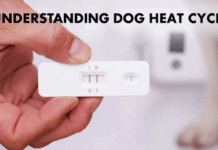Last Updated on March 1, 2022 by Dogs Vets
Pet Health: The Importance of Routine Checkups & How Often Should Your Pet Visit?
According to the latest reports by the National Pet Owners Survey, 70% of US households are home to at least one pet.
While there are endless benefits of owning a pet, providing them with regular health care is most important, requiring regular veterinary visits. The American Animal Hospital Association states that all pets need to get examined at least once every year.
It is essential to keep up with your pet’s general health checkups, especially during their first year, to ensure healthy growth and detect any early signs of concern.
Beyond vaccinations and flea treatments, practicing preventative care provides your pet’s overall health before any signs of diseases or injuries occur with this simple lifestyle change.
Different factors determine how often your pet should receive an examination, such as a type of species or their current life stage.
While younger pets require annual visits every year for routine checkups to help identify precursors of severe health issues, elderly pets need to visit more frequently to screen and diagnose any persistent diseases.
Some routine questions asked by the veterinarian are related to your pet’s deworming status, in-depth medical history, past vaccinations, daily food and water intake, recent injuries, etc., as part of the diagnosis.
Most pet parents have apprehension regarding the higher costs of frequent routine checkups, which is false in the long run. Doing regular visits can help detect any early signs of illnesses and increase the life expectancy of your pet.
Another reason that pets don’t go for routine tests, especially cats, is the stressful environment. Most cats think that leaving the house for regular checkups is a doomsday.
To ensure that your cat is treated well against deadly parasites, you can subscribe to a monthly cat flea treatment subscription that provides the best flea medicine for cats so that you wouldn’t have to take your cat for a visit unnecessarily.
The general physical examination initially requires the veterinarian to look at the pet’s description (breed, age, sex) and history (diet, medical, vaccination, environment, reproduction) before screening the pet.
The initial observation by the veterinarian can help them gather a better image about the pet’s condition, such as their general appearance, body condition, attentiveness, posture, any signs of dehydration, etc.
To evaluate their vital signs, the vet will observe the pet’s health history, current status, and impending concerns.
To check their current health status, the pet will be examined based on their body weight, temperature, heart & pulse rate, respiratory rate, etc., along with the head-toe examination as mentioned below:
1. Eyes & Ears:

Image Credits: Pexel
To avoid any infections in the eyes or ears, pets need to be assessed for any discharge, inflammation, redness, irregular pupil size, observe any unusual squinting, etc.
If your pet has severe eye discharge, then it may be possible that they’re suffering from corneal ulcers, which are also very common in flat-faced pets.
Additionally, untreated glaucoma can also result in severe eye pain and permanent blindness, requiring surgery.
Both cats and dogs can have bacterial infections in their ears, leading to thickness or inflammation of the eardrums and cause significant pain and damage.
In case of any abnormal masses of cells formed in the organ, removal will be necessary. Ears and feet are two very challenging parts of the body for the vet to check since pets are not comfortable being touched in these areas by a stranger.
Doing small exercises at home can help to lessen the anxiety and trauma that comes through these sessions.
You can deviate your pet’s attention with some positive associations, such as by using treats, biscuits, toys, etc.
Following this will help you guide your pets to trust others with their paws, ears, and other areas that need to get checked.
2. Heart, Stomach & Lungs:

Image Credits: Pexel
To evaluate the heart rate and rhythm, the veterinarian uses a stethoscope to check the heart and lungs for any abnormal heart sounds, difficulty breathing, fluid in the chest, which creates heart murmurs.
These serious indicators are often suppressed by pets by coughing, wheezing, or showing a general lack of energy and alertness, which is why physical examination and related diagnostic tests are an absolute must.
In the abdomen, veterinarians need to inspect the organ size and location for displacement or bruising and check the presence of fluid, feces, and masses. Abdominal pain can get detected by restlessness, diarrhea, vomiting, hypersalivation, etc.
3. Muscles:

Image Credits: Pexel
Veterinarians need to inspect any abnormalities in the muscle tissues by looking for stability between joints, swellings, thinning, bone spurs. They need to assess the pet’s muscles for a range of motion in weight-bearing positions, check for fractures, pain in movement, and more.
Practicing this can help determine any muscle-related severe illnesses, especially in elderly pets, and remedy it or find ways to help manage their pain.
4. Mouth & Skin:

Image Credits: Pexel
A clean and clear mouth and skin are incredibly vital for a healthy pet. Excess tartar build-up in the mouth can also become a big issue, along with redness or inflammation in the gums, indicating gingivitis, growing bacteria in the mouth that could harm other bodily functions and organs.
Examining the skin and fur coat of the pet is essential, be it dry or oily, to detect any clinical risks such as masses, parasites, excessive matting, alopecia, etc.
Excessive shedding of the fur can also indicate several health issues, such as malnutrition, infestation, hormonal disorders, skin inflammation, and more.

Image Credits: Pexel
After the pet’s examination is complete, the veterinarian will further suggest other necessary tests for diagnosis.
These may include blood work reports, urine samples, heartworm tests, or a routine fecal check to discover early indications of illnesses such as diabetes, kidney disorders, diarrhea, or other diseases.
While some pets may be better at hiding their symptoms, a thorough physical assessment along with clinical tests is required to detect any illnesses at their early stages.
Doing this will increase your pet’s life expectancy and allow them to live their healthiest lifestyles.
Conclusion…
We hope you enjoyed this article… What are your thoughts on The Importance of Routine Checkups & How Often Should Your Pet Visit?
Please feel free to share with us in the comments section below.
Fact Check
We strive to provide the latest valuable information for pet lovers with accuracy and fairness. If you would like to add to this post or advertise with us, don’t hesitate to reach us. If you see something that doesn’t look right, contact us!

















